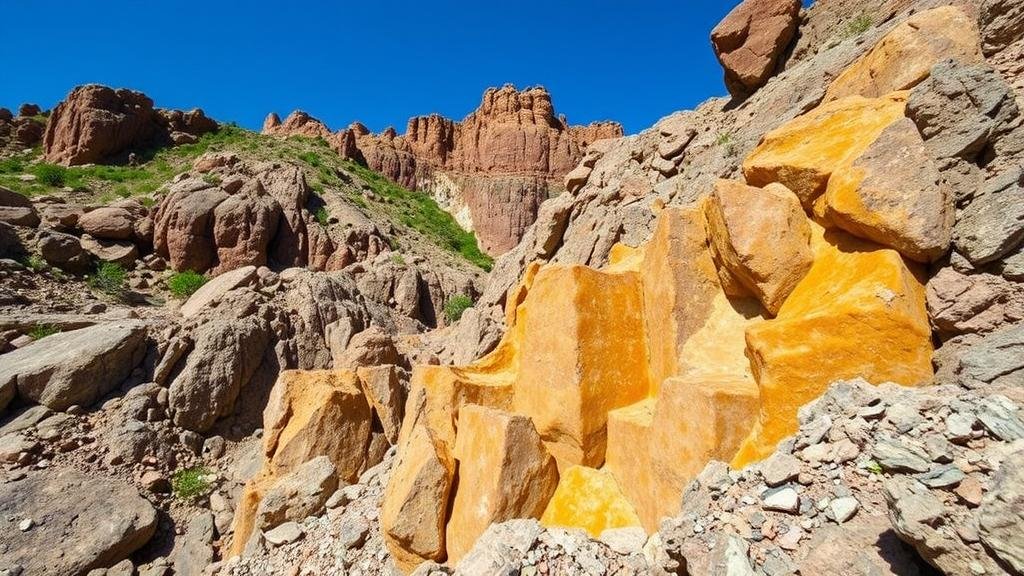Spotting Gold-Bearing Quartz Veins in Rugged Terrain
Spotting Gold-Bearing Quartz Veins in Rugged Terrain
For gold prospectors, the allure of striking it rich often leads to the challenge of navigating rugged terrain in search of gold-bearing quartz veins. Understanding how to spot these valuable formations is crucial and can significantly increase the probability of finding gold deposits. This article provides a comprehensive overview of identifying gold-bearing quartz veins, the geological processes involved, and practical tips for navigating through challenging landscapes.
The Importance of Quartz Veins in Gold Prospecting
Gold-bearing quartz veins are critical indicators of gold deposits due to their formation in specific geological settings. When hydrothermal fluids–often rich in gold and other minerals–move through fractures in rock, they can precipitate quartz and deposit gold in the process. This relationship between quartz and gold makes the presence of quartz veins an essential target for prospectors.
Geological Characteristics of Gold-Bearing Quartz
Gold-bearing quartz veins often exhibit unique geological characteristics. The following features may indicate the presence of gold:
- Coloration: Quartz veins can appear milky, clear, or even have a pink hue. Sometimes, they may show rust-colored stains from iron minerals.
- Texture: Look for crystalline quartz that is typically shiny and may have a milky appearance, indicating the potential for embedded gold particles.
- Associated Minerals: The presence of sulfides like pyrite or chalcopyrite can also be indicative of gold mineralization.
Evaluating Geographic Locations
Specific geographic locations are known for higher occurrences of gold-bearing quartz veins. Understanding these regions can save time and increase success rates. Areas like:
- The Sierra Nevada: Known for its extensive gold deposits, this mountain range contains many exposed quartz veins.
- The Appalachian Mountains: Another gold-rich area, where prospectors have often reported finding quartz veins in hilly terrains.
Techniques for Spotting Quartz Veins
Successful prospectors employ several techniques to effectively spot quartz veins in rugged terrain:
- Topographic Maps: Utilizing topographic maps can help identify elevation changes and geological features that could indicate quartz vein locations.
- Field Observation: During field visits, look for outcrops or exposure of rocks where quartz veins may be present. Pay close attention to crack zones and altered rock.
- Metal Detectors: Using metal detectors can help locate gold embedded within quartz in areas where visible signs are minimal.
Case Studies and Real-World Applications
Numerous case studies illustrate the process of successfully locating and extracting gold-bearing quartz:
- California Gold Rush: Many prospectors honed their skills along the Sierra Nevada, using their understanding of quartz formations to locate rich deposits.
- Alaska’s Gold Fields: More recently, advances in geology and modern prospecting techniques in places like Fairbanks have led to significant gold discoveries through quartz veins.
Challenges in Rugged Terrain
Navigating rugged terrain presents unique challenges that can hinder gold prospecting efforts:
- Physical Barriers: Dense vegetation, steep inclines, and rocky outcrops can make access difficult.
- Weather Conditions: Sudden weather changes in mountainous regions can create hazards and limit visibility.
Preparing for these elements by equipping yourself with appropriate gear and maintaining an understanding of local weather patterns can enhance safety and effectiveness during field exploration.
Actionable Takeaways
Spotting gold-bearing quartz veins in rugged terrain requires a combination of geological knowledge, observational skills, and practical techniques. Here are some actionable takeaways for aspiring prospectors:
- Familiarize yourself with the geological characteristics of gold-bearing quartz.
- Use mapping tools and conduct thorough field observations.
- Prepare adequately for environmental challenges.
- Learn from historical case studies to refine your prospecting strategies.
By following these guidelines, prospectors can increase their chances of successfully locating gold-bearing quartz veins, maximizing their efforts in rugged, often unforgiving terrain.



